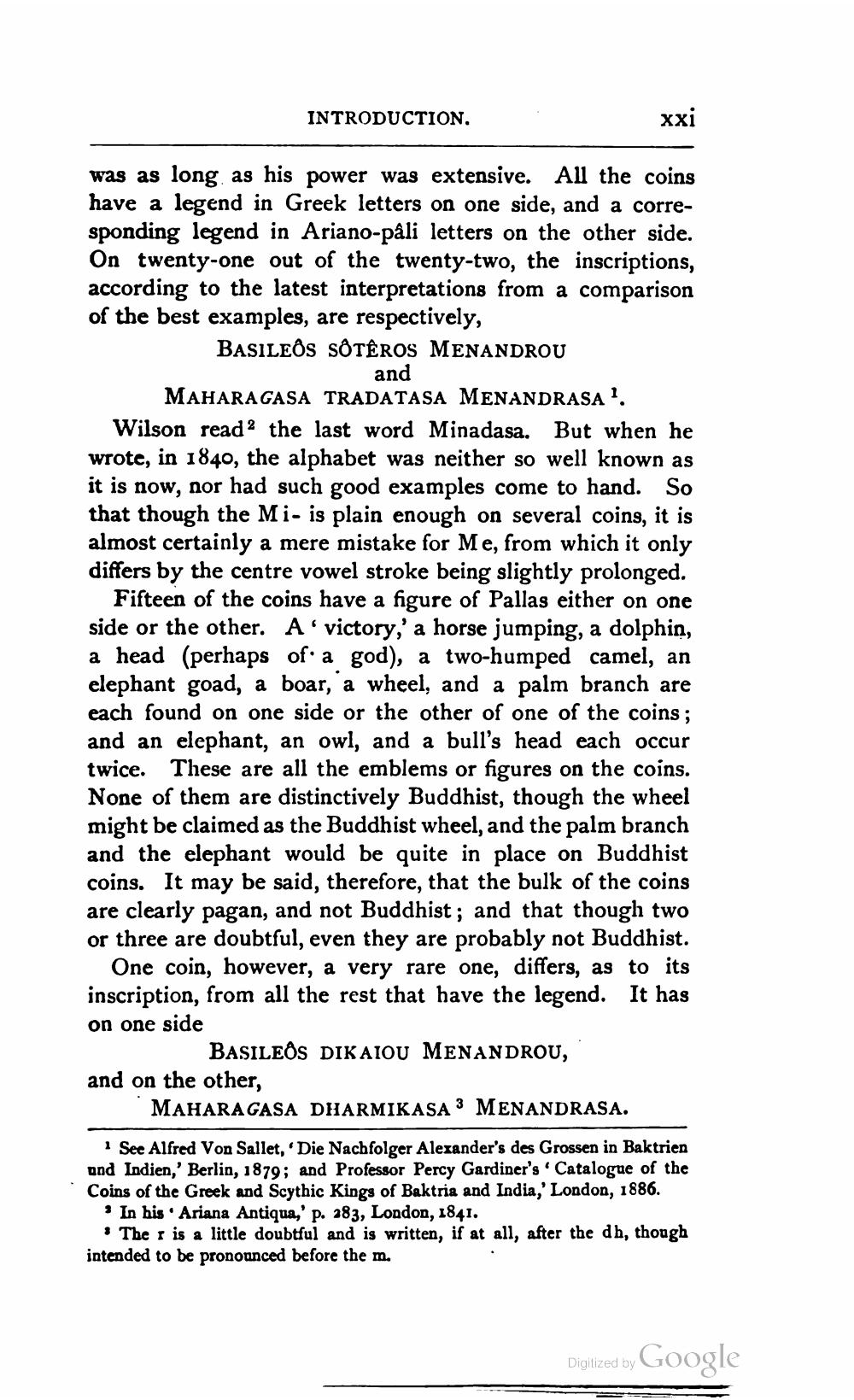________________
INTRODUCTION.
xxi
was as long as his power was extensive. All the coins have a legend in Greek letters on one side, and a corresponding legend in Ariano-pali letters on the other side. On twenty-one out of the twenty-two, the inscriptions, according to the latest interpretations from a comparison of the best examples, are respectively, BASILEÔS SÔTÊROS MENANDROU
and MAHARAGASA TRADATASA MENANDRASA?. Wilson read the last word Minadasa. But when he wrote, in 1840, the alphabet was neither so well known as it is now, nor had such good examples come to hand. So that though the Mi- is plain enough on several coins, it is almost certainly a mere mistake for Me, from which it only differs by the centre vowel stroke being slightly prolonged.
Fifteen of the coins have a figure of Pallas either on one side or the other. A victory,' a horse jumping, a dolphin, a head (perhaps of a god), a two-humped camel, an elephant goad, a boar, a wheel, and a palm branch are each found on one side or the other of one of the coins; and an elephant, an owl, and a bull's head each occur twice. These are all the emblems or figures on the coins. None of them are distinctively Buddhist, though the wheel might be claimed as the Buddhist wheel, and the palm branch and the elephant would be quite in place on Buddhist coins. It may be said, therefore, that the bulk of the coins are clearly pagan, and not Buddhist; and that though two or three are doubtful, even they are probably not Buddhist.
One coin, however, a very rare one, differs, as to its inscription, from all the rest that have the legend. It has on one side
BASILEOS DIKAIOU MENANDROU, and on the other,
MAHARA GASA DHARMIKASA 3 MENANDRASA.
See Alfred Von Sallet, Die Nachfolger Alexander's des Grossen in Baktrien and Indien,' Berlin, 1879; and Professor Percy Gardiner's 'Catalogue of the Coins of the Greek and Scythic Kings of Baktria and India,' London, 1886.
* In his . Ariana Antiqua,' p. 283, London, 1841.
• The r is a little doubtful and is written, if at all, after the dh, though intended to be pronounced before the m.
Digitized by Google




